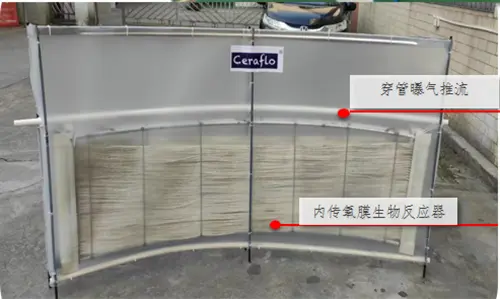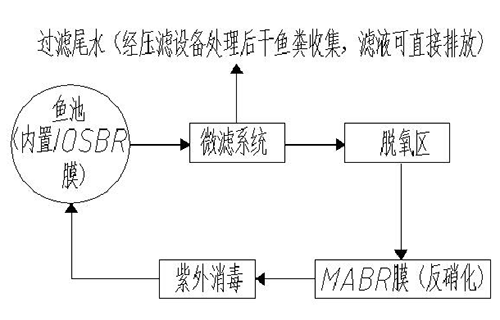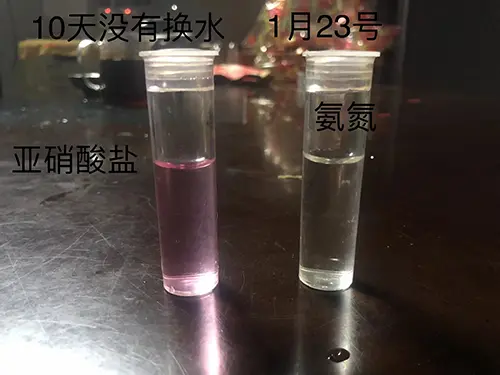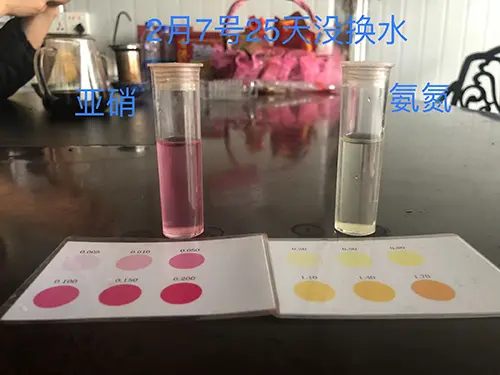Indoor fish pond aquaculture: IOSBR internal oxygen supply membrane bioreactor
1. Product Introduction
Equipment features:
1. High efficiency, achieving the growth of microorganisms attached to the aeration push flow and internal oxygen transfer membrane bioreactor, rapidly decomposing NH4+and NO2- in water, and purifying water quality.
2. Low energy consumption, a large number of advantageous bacterial communities are formed on the membrane equipment to quickly degrade water pollutants, accurately transfer oxygen, and have high oxygen utilization efficiency. At the same time, due to the special nature of membrane materials, oxygen is easier to pass through.
3. High efficiency and excellent water quality can increase the density of aquaculture and improve product quality. Improve economic benefits.
4. Optimizing the environment, reducing or even zero discharge of aquaculture wastewater, reducing pollution to the surrounding environment, and achieving the goal of green mountains and clear waters.
5. Easy to operate, integrated equipment, new material technology compared to traditional methods, lower energy consumption, automation level, and more convenient management.

2.1 Introduction to our cooperative breeding plants with Foshan:
Place a push flow device in the center of an industrial aquaculture box or high-level bucket to stir up the fish manure and feed deposited at the bottom of the tank. Place an internal oxygen transfer membrane bioreactor around the tank to efficiently supply oxygen to the fish in the tank, reduce aeration energy waste, and preliminarily nitrify the organic matter in the water by adhering to the membrane filaments. Then, filter the insoluble fish manure and bait in the water through the microfiltration membrane and use them as organic fertilizers. The filtered water flows to the pre deoxygenation zone to consume dissolved oxygen in the water, and then flows to the MABR anoxic zone for denitrification treatment to further degrade NH4+. After disinfection by ultraviolet radiation, it is recycled and reused.

2.2 Effect diagram of aquaculture operation without water change for multiple days:
The project has been running for several days without changing the water, adding antibiotics or disinfectants. From the data of ammonia nitrogen and nitrite detected in the water samples, it can be seen that the biochemical treatment effect is relatively ideal. The water quality of the aquaculture water body always maintains good conditions, and the fish population grows normally, truly achieving the goal of recycling the aquaculture water body and reducing the discharge of a large amount of aquaculture tail water.


